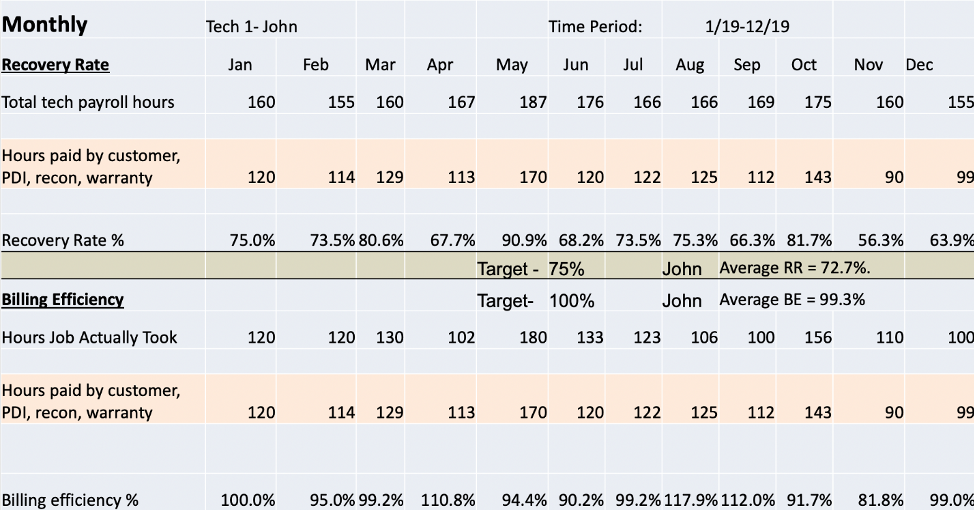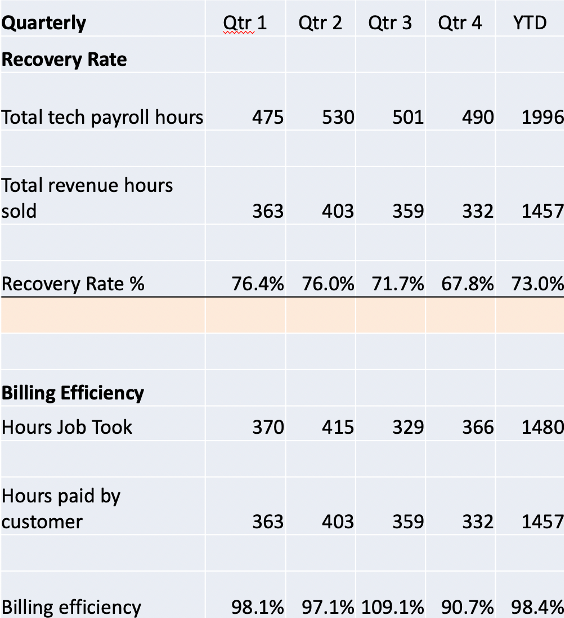Making sure technicians’ billing efficiencies and recovery rates are in good shape can be a great way for dealerships to create as much cashflow as possible. Trent Hummel, a consultant and trainer with the Western Equipment Dealers Assn.’s Dealer Institute recently gave a webinar for Farm Equipment where he explained how dealers should be taking down credit card numbers ahead of time, when to get OEMs to help pay for warranty losses and how to increase billing efficiency.
This is the third in a series of articles based on Hummel’s webinar. Part 1 of this series covers how to break down expenses, part 2 of this series covers optimizing the parts department and part 4 covers wholesgoods.
Be Proactive on Billing Service
Getting payment for services rendered can sometimes be difficult. Hummel recommends not calling a customer until the work order is closed. This allows the service advisor the ability to share the final price with the customer, followed by asking for credit card payment. In a similar vein, service staff can request a customer’s credit card number when the customer initially drops off their machine, giving them the ability to charge the credit card as soon as the job is complete. Then the customer can simply pick up their equipment and leave without stopping to settle up.
Not obtaining payment info can lead to longer work in progress (WIP) totals. Sometimes customers can’t be reached, leaving the machine sitting at the dealership with an unpaid work order or worse, the customer takes their machine with a promise to pay later.
Warranty Losses & Out of Warranty Repairs
Hummel pushes for service departments to re-submit their warranty claims when a claim is not paid in full, specifically when the issue was an OEM problem. It’s important to have technicians help write the warranty story submission. A technician who knows the specifics of the equipment and understands the problems that triggered the warranty can be a big help in explaining the cause and effect of a failure to a customer. Hummel recommends dealers claim all legitimate billing on these claims. “The OEMs usually have little codes for diagnostic time, cleaning and incidentals, whatever they are, but claim them all when appropriate” he says. “If they're legit, claim them, because you've got to get that money coming to the dealership.”
For some “just off” warranty service repairs, dealerships might have a legitimate reason to ask the OEM to pitch in. Often these service jobs become a one-third each cost share between the dealerships, OEM and the customer. He mentions customers may be confused on why they might be asked to help cover the cost of this kind of repair. The wholegoods department should be explaining warranties at the time of purchase in order for customers to understand what happens once warranty expires, he says.
Recovery Rates & Billing Efficiency

By breaking down the recovery rates and billing efficiencies of one of his technicians, Trent Hummel is able to see what his average percentages are and where his high and low months were.

Broken down by quarter, Trent Hummel can get a bigger picture of the technicians’ contributions to the financial strength of the dealership.
For recovery rate in the service department, Hummel pushes for dealers to coach their staff on the importance of the concept. If your goal is to have a 75% average recovery rate, technicians should be working “on revenue-generating work orders for at least 75% of each day,” he explains.
Hummel pushes for technicians, if needed, to be involved in explaining the work order times with customers. Technicians have the ability to prevent or reduce writing off hours, as they can detail the job and justify additional labor charges.
For Hummel, the key to improving billing efficiency is assigning the right technician to the appropriate service order in order to meet or beat a quoted job. “If you bill a customer for 10 hours, you want a tech on it who can get it done in 8 hours,” he says. “Then you have 2 hours of pure profit.”
In showing numbers from one of his techs, Hummel illustrates how the dealership can review billable hours vs. non-billable hours. “What we’re looking for is the job to take less actual time than quote time,” he says. “We want it to be like April, where we charged out 113 hours but only paid the technician 102 hours. That’s 110% billing efficiency. This is where every tech should be.”
Hummel will be presenting a session at this year’s Dealership Minds Summit 2020 titled “Tracking Used Equipment Trends & Following the Data,” where he’ll share data tracking used combine inventory by country and by brand to unearth whether the industry is growing or reducing used combine stock.






